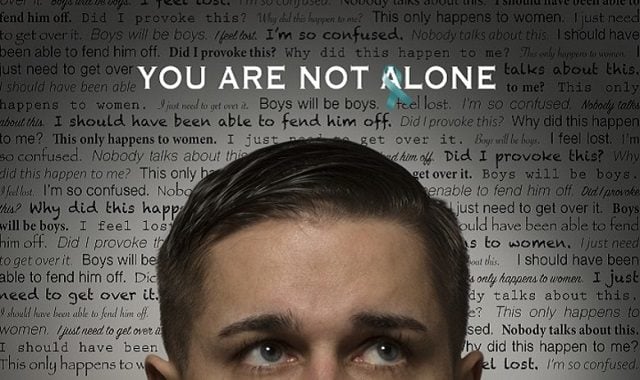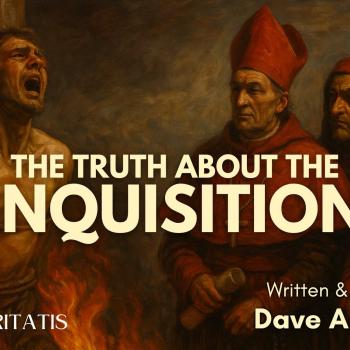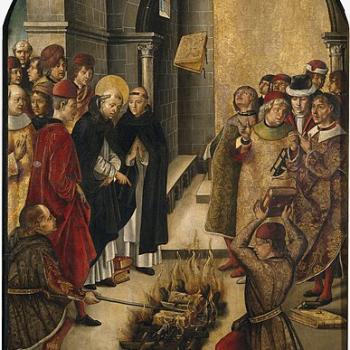
See my previous related paper, Scandalous Sexual Misconduct Committed by Protestant Clergy. It provides access to 838 detailed Protestant clergy abuse reports.
My only point in documenting these horrors is to document the facts that they don’t only occur in Catholic circles (since that is all we hear about in the media). It’s just not true. I utterly condemn the heinous sins and at the same time tell the truth about where they are occurring (and that is everywhere, pretty much). If we pretend that it only happens with priests, then we are enabling the perpetrators to commit even more crimes, as we put our heads in the sand.
In other words, pointing out the severe bias of the media is not helping the abuse continue; it is the pretense of “Catholic only” that does that, because then it can occur in all these other paces, and folks aren’t even aware of it (which is exactly what the molesters and pedophiles and sexual abusers of young men like: safe anonymity).
[since this paper was written in 2007, of course we have seen the Harvey Weinstein / Hollywood sexual scandals, and the media sexual scandals and the #metoo movement, before the latest grotesque revelations of sexual mischief from Catholic Cardinals came to light]
[some links may no longer work (this paper is from eleven years ago). I didn’t check them all. If you want to try to run down a defunct link, try to find it by pasting the URL to the Internet Archive / Wayback Machine]
*****
Clergy Sexual Abuse (Frances Park)
It is commonly believed that clergy sexual abuse is an exclusively Catholic problem that does not happen in other churches. In a 1983 doctoral thesis by Richard Blackmon, 12% of the 300 Protestant clergy surveyed admitted to sexual intercourse with a parishioner and 38% admitted to other sexualized contact with a parishioner.
When Mentor Becomes Molester (Alexa Smith)
Reprinted with permission from Presbyterians Today, magazine of the Presbyterian Church (U.S.A.).
The Office of the General Assembly of the Presbyterian Church (U.S.A.) estimates that there are about 50 clergy sexual misconduct cases every year. Although cases in the PCUSA tend to involve adult women and male pastors, there are sometimes cases reported that involve children and other men.
When Trust Is Betrayed: Understanding Sexual Abuse by Clergy (James Poling)
This article has been reproduced from Interpreter Online, the electronic companion to The United Methodist Interpreter magazine. Reprinted with permission from Interpreter Copyright © January 1997. All rights reserved.
How widespread is it?
Some studies indicate that 10 to 20 percent of all clergy have had sexual involvements with parishioners. Still more admit engaging in inappropriate sexualized emotional relationships that stopped short of physical expression. There are some indications that sexual abuse by clergy is increasing, perhaps because of sexual freedom gained from recent societal changes.
Large collection of articles (Advocate Web)
Sexual Abuse: How Congregations Find Healing (Jody Veenker), Christianity Today, August 9, 1999
Article detailing cases of sexual abuse in Orthodox Churches
Episcopalians: Penthouse Expose Could Spark Church Teaching (Ted Olsen), Christianity Today, December 9, 1996
An expose in this month’s issue of Penthouse alleging sexual misconduct by priests in the Episcopal Diocese of Long Island, New York, may bolster a drive within the church to limit sexual relations to heterosexual marriage.
The article claims that, as rector at Saint Gabriel’s Church in Brooklyn, Lloyd Andries engaged in repeated homosexual relations in the church’s sanctuary, provided illicit drugs, traded housing for sex with young Brazilian men, and “married” one of them. He has resigned in the wake of the allegations.
Andries, who is planning a libel suit against the magazine, denies allegations of sexual activity in the sanctuary, cocaine use, and orgies. He confirms, however, that he was in a homosexual relationship.
The church is not facing a single scandal,” says Todd Wetzel, executive director of the conservative Episcopalians United. “It is facing many, of which this is the most lurid.
Data Shed Light on Child Sexual Abuse by Protestant Clergy (Associated Press, June 16, 2007, New York Times) [see also a related URL]
The three companies that insure a majority of Protestant churches say they typically receive upward of 260 reports a year of children younger than 18 being sexually abused by members of the clergy, church staff members, volunteers or congregants.
The figures released to The Associated Press offer a glimpse into what has long been a difficult phenomenon to detail: the frequency of sexual abuse in Protestant congregations.
. . . Protestants’ numbers are harder to come by and sketchier because the denominations are less centralized than the Catholic Church. Many congregations are independent, making reporting even more difficult.
Some of the numbers are from three insurers: the Church Mutual Insurance Company, the GuideOne Insurance Company and the Brotherhood Mutual Insurance Company.
Together, they insure 165,495 churches and worship centers — mostly Protestant congregations — for liability against child sexual abuse and other sexual misconduct. They also insure more than 5,500 religious schools, camps and other organizations.
Preachers Accused of Sins, and Crimes: ABC News Investigation Uncovers Predators in Protestant Churches, Jim Avila, Bonnie Van Gilder, and Matt Lopez, April 13, 2007 (ABC News / 20/20) [see also a related URL] [concentrates on Southern Baptists]
[A] six-month investigation by “20/20” found Protestant ministers, supposed men of God from every denomination, sexually abusing the children who trusted them. The investigation uncovered “preacher predators” in every corner of the country.
Sexual Abuse by Catholic Clergy: A Moral Panic (Religious Tolerance.Org / Ontario Consultants on Religious Tolerance)
Abuse Rate: Few people seem to be asking whether sexual abuse of children is more common in the Roman Catholic church than in Protestant churches or other faith groups. Philip Jenkins, author of “Pedophiles and Priests” found no evidence that the incidence of child molestation among Roman Catholic priests was any greater than within other Christian denominations.
Magnitude: Using terms like “The Sins of the Fathers,” some in the media are implying that child sexual abuse by priests is extremely common throughout the U.S. church. The best estimates that we have seen indicate that only a few percent of priests abuse children. As Pope John Paul II stated, the panic casts a “dark shadow of suspicion over all the other fine priests who perform their ministry with honesty.”
. . . Hebephilia: Little attention is being given to the exact nature of clergy abuse. The panic seems to be focusing on abusive pedophilia — the sexual molestation of pre-pubertal children by priests. Yet most of the abuse appears to be by abusive hebephiles — adults attracted to post-pubertal adolescents. “[In] other than isolated cases like the Boston one, the overwhelming majority of cases involve gay priests who have been sexually active with young seminarians or 16- or 17-year-old boys. While such homosexual activities with minors are criminal offenses — and immoral — they are certainly not examples of pedophilia or child molestation.”
. . . Public bias: The public may view sexual abuse by priests very differently from similar crimes by Protestant clergy. The Roman Catholic Church is generally seen as a monolithic organization with a clearly defined rigid hierarchy. Thus a case of abuse becomes a “Roman Catholic scandal” rather than a local parish problem. A similar molestation in a Protestant church would probably be viewed as a local problem isolated to a single congregation, because of the decentralized nature of most Protestant churches.
Sex scandals also affect Protestant clergy [scroll down a little]
By Richard N. Ostling, AP Religion Writer – April 4, 2002
Penn State historian Philip Jenkins argued in his 1996 book, Pedophiles and Priests, that both secular and Catholic media exaggerate the extent of Catholic cases involving minors, while downplaying Protestant abuse.
. . . Jenkins, an Episcopalian, thinks a 1992 survey from the Chicago Archdiocese is more representative of the true picture in Catholicism.
Among 2,252 priests serving over four decades, 39 priests (1.7 percent) apparently abused minors. Only one abuser could be termed a pedophile under the strict, clinical definition of the word — meaning the victim was prepubescent.
“I am prepared to be convinced the Catholics have a bigger problem” than Protestants, Jenkins said, but nobody has good data, partly because Protestant groups are too numerous. “I certainly haven’t seen anything, and I’m looking hard.”
Minneapolis psychologist Gary Schoener agreed.
“There are no real scientific data” on Protestants, he said. Since 1974, his Walk-In Counseling Center has been consulted on more than 2,000 cases of clergy sexual misconduct of all types, two-thirds of them with Protestants.
He finds that sex with adult women or teen-age girls is the most frequent Protestant problem.
. . . The conservative World magazine says Protestantism faces a “severe problem” of clergy involvement with people the ministers are counseling, calling this “an egregious abuse of power.”
Breaking Faith [scroll down about a third of the way]
By Lynn Vincent – Cover Story – World Magazine March 30, 2002
As sexual scandal rocks the Roman Catholic church, Protestants face a lurking sex scandal as well. Will churches and national organizations take biblical steps to prevent further shame?
. . . While northeastern precincts of the Roman Catholic Church writhe in the bonds of yet another sex scandal—more than 80 priests accused of pedophilia and other abuse—the Protestant church has a severe problem of its own: some pastoral counselors having sex with counselees. Such contact can be classified biblically as “adultery” or “fornication,” but often is not a “consensual affair.” It is sexual abuse—and an egregious abuse of power that can rob women of their faith in clergy, in the institution of the church, and even in God.
. . . When a pastor steals that hope by sexualizing a counseling relationship, damage to women can range from depression to relationship trouble to suicide, said Gary Schoener, a Minneapolis psychologist who has consulted in more than 3,000 clergy sexual abuse (CSA) cases since 1980.
. . . No current theological breakdown of offending pastors exists, but a 1984 Fuller Seminary survey of 1,200 ministers showed one in five theologically conservative pastors admitting to some sexual contact outside of marriage with a church member, while over two-fifths of “moderate” and half of “liberal” pastors owned up to the same.
A Journal of Pastoral Care article summarizing a 1993 survey of Southern Baptist pastors showed 6 percent acknowledging sexual contact outside of marriage with someone in the congregation. Roy Woodruff, executive director of the 3,000-member Association of Pastoral Counselors, estimates that about 15 percent of pastors “either have [violated] or are violating sexual ethical boundaries.”
Collection of articles on clergy sexual abusers: “Protestants Face Sexual Abuse Failures Too” (PeaceMakers.Net)
Sex Abuse Spans Spectrum of Churches, Mark Clayton, The Christian Science Monitor, April 5, 2002
Despite headlines focusing on the priest pedophile problem in the Roman Catholic Church, most American churches being hit with child sexual-abuse allegations are Protestant, and most of the alleged abusers are not clergy or staff, but church volunteers.
These are findings from national surveys by Christian Ministry Resources (CMR), a tax and legal-advice publisher serving more than 75,000 congregations and 1,000 denominational agencies nationwide.
CMR’s annual surveys of about 1,000 churches nationwide have asked about sexual abuse since 1993. They’re a remarkable window on a problem that lurked largely in the shadows of public awareness until the Catholic scandals arose.
The surveys suggest that over the past decade, the pace of child-abuse allegations against American churches has averaged 70 a week. The surveys registered a slight downward trend in reported abuse starting in 1997, possibly a result of the introduction of preventive measures by churches.
. . . James Cobble, executive director of CMR, who oversees the survey, says the data show that child sex-abuse happens broadly across all denominations– and that clergy aren’t the major offenders.
“The Catholics have gotten all the attention from the media, but this problem is even greater with the Protestant churches simply because of their far larger numbers,” he says.
Where does the Baptist buck stop?: Southern Baptists acknowledge abuse among churches
(Terry Mattingly: Leadership U., June 19, 2002)
The clergy sexual abuse statistics were staggering.
Local reports from angry, hurt and humiliated laypeople were too horrifying to ignore.
So the assembled church leaders decided that they had to say something, they had to call for some kind of action because they were facing a nasty moral crisis.
“We encourage those religious bodies dealing with the tragedy of clergy abuse in their efforts to rid their ranks of predatory ministers,” said their June 12 resolution. “We call on civil authorities to punish to the fullest extent of the law sexual abuse among clergy and counselors. …
“We call on our churches to discipline those guilty of any sexual abuse … as well as to cooperate with civil authorities in the prosecution of those cases.”
Thus, the “messengers” to the annual meeting of the Southern Baptist Convention acknowledged that America’s largest non-Catholic flock has been hit by waves of clergy sexual abuse affecting untold numbers of women, men, teen-agers and children. The resolution, which passed with little opposition, called for “ministers of the gospel — whether they are pastors, counselors, educators, missionaries, chaplains or others — to be above reproach morally, both within the body of Christ and in the larger community.”
The intent of is clear. Yet this statement also demonstrates why it will be hard for freewheeling and autonomous Protestant congregations to attack clergy sexual abuse.
While news media have repeatedly focused on abuse among Catholics, Protestant insiders have also long known that many of their own clergy — especially youth workers and pastors who do counseling — were breaking the laws of God and man.
“The incidence of sexual abuse by clergy has reached ‘horrific proportions,’ ” according to a 2000 report to the Baptist General Convention of Texas. It noted that studies conducted in the 1980s found that about 12 percent of ministers had “engaged in sexual intercourse with members” and nearly 40 percent had “acknowledged sexually inappropriate behavior.”
Sadly, this report added: “Recent surveys by religious journals and research institutes support these figures. The disturbing aspect of all research is that the rate of incidence for clergy exceeds the client-professional rate for both physicians and psychologists.”
Rabbi’s Odyssey Reflects Struggle on Sexual Abuse: Jews Begin to Confront Silence That Hid Clergy’s Misdeeds (Alan Cooperman), Washington Post Staff Writer
Sunday, February 2, 2003; Page A17
During his 30-year career, Sidney I. Goldenberg taught math in the New York schools, served as cantor at two synagogues on Long Island and became the rabbi of a Jewish congregation in California. He was a respected teacher, a man of learning — and a child molester.
Before he was convicted and sent to prison in 1997 for sexually abusing a 12-year-old girl during bat mitzvah lessons, there had been numerous complaints against him. But each time allegations arose, he moved to a new community, leaving a trail of whispers and shattered lives.
Prosecutors, alleged victims and their families say Goldenberg was able to move from job to job because of a wall of silence and shame around sexual abuse in the Jewish community — a wall that some believe is finally coming down, thanks to the scandal over sexual abuse by Roman Catholic priests.
“In the past it was covered up, just like in the Catholic Church,” said Vicki Polin, an art therapist in Baltimore who is forming an association of Jewish survivors of childhood sexual abuse. “Survivors’ stories were discounted. They were told they were lying. Their parents would go to the proper authorities within the Jewish community and nothing was done.”
While Catholicism has been hardest hit, almost every major religion in the United States has grappled with cases of child sexual abuse by clergy.
. . . “I don’t think pedophilia has a religion,” said Na’ama Yehuda, a speech pathologist in New York who is co-founder, with Polin, of the Awareness Center, an organization for Jewish survivors of childhood trauma.
. . . Unlike the priests, who were transferred by superiors, Goldenberg moved on his own volition. The families of some of his alleged victims, all teenage girls, believe that their complaints were ignored or hushed up. But none has sued.
“In the Catholic Church, the issue was the cover-up by the church hierarchy. Here, it’s the community, not the hierarchy. It’s the whole community not wanting to admit trouble in our midst,” said Yosef Blau, an Orthodox rabbi at New York’s Yeshiva University who counsels victims of sexual abuse.
Black churches protect predators while neglecting victims (Marian Hubbard Jefferson), Louisiana Weekly, August 6, 2007
In May, Ft Worth pastor Sherman C. Gee Allen of the Shiloh Institutional Church of God in Christ was suspended by the national body of the Church of God in Christ. Allen was originally indicted on sexual assault charges in 1983, after a 21-year-old woman accused him of drugging, then sodomizing and raping her with a club.
According to local reports, allegations have once again been made against Allen. In fact, 35 women are accusing the local pastor of abuse. Among the complainants is 33-year-old Davina Kelly, a former member of Shiloh. Kelly, a married woman attending Allen’s church.
. . . Faith Trust Institute’s National Declaration of Religious and Spiritual Leaders shows that more than 40 national religious leaders have signed a pledge indicating their acknowledgment of the severity of the problem of sexual abuse and their commitment to eradicate it. But, Fortune acknowledged, little has been accomplished across the religious isle when it comes to the response of the Black non-Catholic church toward taking an active role in the eradication of clergy sexual abuse.
. . . But real figures for clergy sexual abuse in the Protestant church have been a bit more difficult to come by and are sketchier because Protestant churches, as opposed to their Catholic counterpart, tend to be less centralized and more independent, making reporting of sexual abuse by members of the clergy more difficult, the Associated Press reported.
Risk Management: Protestants Confront Sexual Abuse (John Dart), The Christian Century, © 2002 Christian Century Foundation.
Another reason non-Catholic churches have for the most part slipped under the national media radar, experts suggest, is that the removal of a Protestant pastor for sexual scandal is often only a local story. A more significant difference in the attention to Protestant and Catholic cases, according to James F. Cobble Jr., executive director of Christian Ministry Resources, is that Catholic dioceses usually have large insurance coverage for their parishes. That increases the likelihood of litigation, and a bigger spotlight on the offenses and the church’s responses.
About 12 years ago, many insurance companies created separate policies to cover sexual misconduct, and lowered the coverage to about $100,000 for most individual churches, said Cobble, whose tax advice and church resources company works closely with GuideOne insurance. “With so many small Protestant congregations, allegations often never move beyond the local church or they rise to the level of insurance claims but are settled out of court,” Cobble said. “Cases that tend to get litigated are those with multiple victims,” he said. “Our research indicates the multiple cases occur about 20 percent of the time.”
Baptist pastors speak out on clergy sex abuse, Dallas News Religion, April 12, 2007
In response to the recent exposure that the nation’s largest Protestant denomination has received concerning clergy sexual abuse, Oklahoma pastor Wade Burleson of Enid’s Emmanuel Baptist Church and Texas pastor Benjamin Cole of Arlington’s Parkview Church intend to ask the Southern Baptist Convention to address the issue.
. . . In recent weeks, Southern Baptists have scrambled to respond to a rising number of its ministers who have been arrested for abusing children. The president of the national convention, Frank Page of Taylors, SC, issued a statement this month calling on “every local church to develop written policy guidelines for the care of children and youth . . . [and] to have a system or policy in place to deal with any accusations made.”
Clergy Who Molest: Unique Study Reveals Epidemic, Freethought Today, May 1990.
. . . a first-of-its-kind study of recent cases of molesting clergy and church staff conducted by the Freedom From Religion Foundation.
The study focuses on criminal cases against 190 North American priests and preachers charged with sexual molestation of children during 1988 and 1989. Also studied were 60 child abuse cases involving nonclergy church staff, such as Sunday School teachers, counselors and parochial school teachers and principals. Additionally, there were 62 civil suits during those years brought against molesting pastors and their churches. See section below for details on related studies.
Of the accused clergy, 75 were Catholic priests (39.5%) and 111 were Protestant ministers (58%).
Clergy Sexual Abuse (Fish Eaters)
I truly don’t want to have to make this page, but I hear so much about those “perverted Roman Catholic priests” from some Protestants, I decided to demonstrate that clergy sexual abuse is a problem for ALL of us. I want to state that I am of the opinion that most clergy, be they Protestant, Jewish or Roman Catholic, are good men with good intentions and are not like the fellows in the following accounts. Perhaps after reading the following, we can move on to the topic of SOUND DOCTRINE, leave aside the gossip, and see the horror of sexual abuse for what it is: a most grievous human sin of which people in all denominations can be guilty.
Clergy Abuse: Rabbis, Cantors & Other Trusted Officials (Jewish Coalition Against Sexual Abuse / Assault) [446 specific cases documented]
Stop BaptistPredators.Org: Shining Light on Baptist Clergy Sex Abuse [lots of documentation]
The Survivors Network of those Abused by Priests:
SNAP Press Statement: Statement Regarding Clergy Sexual Abuse in Southern Baptist Convention, June 14, 2006
Child sex abuse by Protestant clergy difficult to document: Large number of denominations, nature of hierarchy make task elusive, William Moyer, Binghamton Press & Sun-Bulletin, August 27, 2007
Allegations and confirmed cases of sex abuse by priests against children in the Catholic Church have been well documented since widespread reports of abuse first surfaced in the Boston area in the early 2000s.
But tracking allegations and confirmed cases of misconduct by Protestant clergy is an elusive task because Christianity’s other ecclesiastical division is wildly diverse, congregational and sometimes staunchly independent compared to Catholicism’s centralized hierarchy.
Ed Hart of the Central New York Baptist Association said all 42 churches in his jurisdiction outlined by Broome, Tioga, Delaware, Herkimer, Steuben and Oswego counties are autonomous. Local church leaders would handle complaints against pastors at the congregational level but would not be required to report anything to Hart or any other denominational officials.
In the Southern Tier’s largest Protestant denomination, all allegations are investigated by the bishop and four district superintendents, said Donald Perry, communications director for the Wyoming Conference of the United Methodist Church, headquartered in Endicott. But denominational polity does not require either the regional or national church to track allegations and confirmed cases.
Family struggles with clergy sex abuse, October 17, 2007 (WJBC radio station) [includes audio files]
When you think of clergy sexual abuse, people often think of older adults and young children. However, a couple from Bloomington says their son would have been 26 last week, but Eric Iliff never made it because he said he as abused at St. Vladimir’s Orthodox Theological Seminary in New York. They say the scars he suffered never healed.
Eric took his own life at a Normal hotel last March, surrounded by family photos and a Bible. His parents consider that a sign that he never lost faith.
Administrators removed Father Timothy Blumentritt from his position once Eric told them he was abused. He was later defrocked by the Church.
However, Eric struggled with the fact he signed an agreement that never acknowledged publicly what happened to him. Monica Iliff says family and friends questioned how it could happen.
Sex Abuse by Clerics – A Crisis of Many Faiths: While sexual misconduct has rocked many religions, leaders of some have acted far more quickly than others
LA Times/March 25, 2003 (Teresa Watanabe)
The wave of clergy sex scandals now engulfing the Roman Catholic Church has battered other denominations as well, producing an uneven record of response that ranges from the Episcopal Church’s aggressive and detailed policies to the Southern Baptist Convention’s widespread lack of written standards.
In the last decade, clergy sexual misconduct has been exposed in virtually every faith tradition. National studies have shown no differences in its frequency by denomination, region, theology or institutional structure.
. . . In faith after faith, the problem of clergy misconduct was exposed during the past 10 to 15 years because victims began stepping forward, plaintiffs began winning large awards and insurers began demanding policies to prevent abuse.
“Victims found their voices, and when they couldn’t find justice in the church, they looked for alternatives in the legal system and started to sue,” said Elizabeth Stellas, an expert on clergy misconduct who helped pioneer programs on it with the inter-religious Center for the Prevention of Sexual and Domestic Violence in Seattle.
Among Protestants, the landmark case involved a woman who accused the Episcopal Diocese and the presiding bishop in Colorado of covering up the sexual misconduct of her priest. When the jury found the church liable and ordered church leaders to pay her $1.2 million in 1991, “that changed the Protestant game completely,” Schoener said, “because it opened the door for higher-ups to be responsible.”
Until then, he said, it had been thought nearly impossible to win awards against Protestant regional and national bodies. That’s because, unlike the Catholic Church hierarchy, in which priests are assigned by diocesan officials, most Protestant congregations, with the exception of Methodists, hire their own pastors. Higher officials had been able to argue that they were not liable for bad hiring decisions, and individual congregations that were responsible often lacked the deep pockets to warrant major judgments.
A Call for a Reporting Policy on Sexual Abuse in the Orthodox Church (Christos and Mary Papoutsy), Hellenic Communication Service
The Greek Orthodox Church has certainly been affected by such scandals, as the headlines of national newspapers and Internet websites will attest. The National Herald reported recently that that “the Holy Synod [of the Orthodox Church] is preparing to discuss old sexual scandals that have reemerged, according to high-ranking ecclesiastical officials at the Greek Orthodox Archdiocese of America. Individuals have already contacted the archdiocese asking for monetary compensation in [the] millions of dollars.”
. . . The Orthodox Church of America (OCA), a separate entity from the Greek Orthodox Archdiocese of America, has had its share of scandalous abuses. Greta Larson of California, whose own children were molested by a monk of the OCA in California, created a website, “Protection of the Theotokos: A Site for Victims of Abuse in the Orthodox Church,” several years ago to publicize abuses by Orthodox priests and clergy (http://www.pokrov.org). Larson gathers and posts all instances of Orthodox abuse worldwide, citing a need to monitor fringe Orthodox groups that are uncanonical and to develop a clearinghouse for information about abusers who frequently cross ecclesiastical jurisdictional lines to avoid detection and punishment.
Collection of scores of articles about sexual abuse in the Orthodox Churches (Pokrov.org)
“Why do we cover this?”, Marvin Olasky – Cover Story – World Magazine, March 30, 2002
“N.C. Bishop Resigns, Admits Misconduct”, The Lutheran, monthly publication of the Evangelical Lutheran Church in America, July 1996
“Theme: Clergy Sexual Abuse”, The Lutheran – June 2002
(originally 11-5-07)
Photo credit: image from an Official United States Air Force Website.
***













